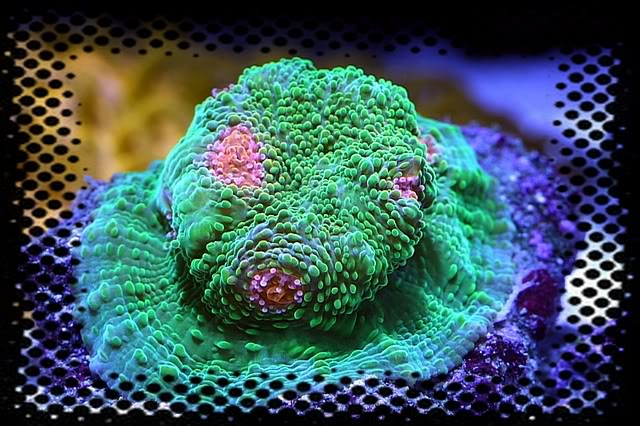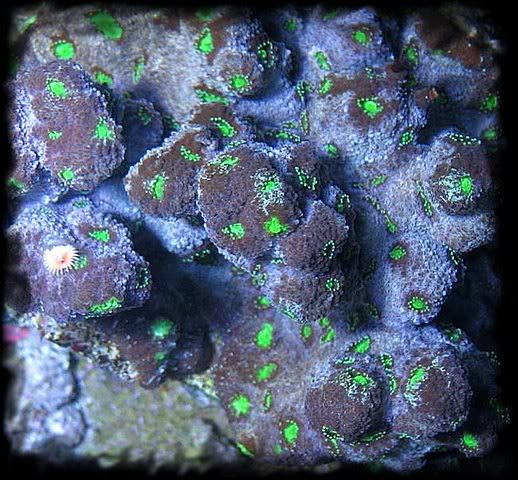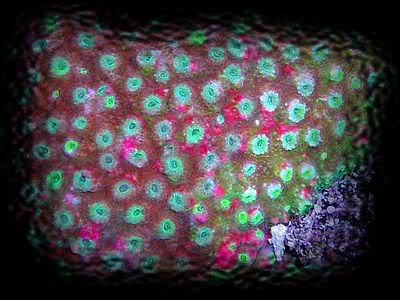Superman Montipora aka Tubs Real Deal Superman
Submitted by: Faviafreak
Scientific Name: Montipora Danae
Family: Acroporidae
Behavior: Passive
Hosts Zooxanthellae: yes

Water current: Medium/High turbulent to encourage growth and keep it clean of detritus
Iodine supplement:N/A
Calcium Supplement: yes (maintaining a proper buffering system is crucial)
Trace Elements Supplement: yes (usually regular water changes will suffice)
Needs meaty foods: no
Needs Phytoplankton: no
Needs Microplankton: no
Lighting: Moderate to high preferably with 20K but not necessary to achieve great color
Growth: Fast to very fast
Placement: Midway to high under metal halides
Care level: Moderate Care needed
Description: Colonies are columns or plates with surfaces covered with large verrucae which are dome-shaped or partly fused into radiating ridges. Corallites are small, immersed and crowned between the verracue. Similar species include Montipora Verrucosa, which has larger more open corallites. In the wild they are common among upper reef slopes and lagoons. The original Superman Monti can be traced back to Tubs at exoticreefs.

Submitted by: Faviafreak
Scientific Name: Montipora Danae
Family: Acroporidae
Behavior: Passive
Hosts Zooxanthellae: yes

Water current: Medium/High turbulent to encourage growth and keep it clean of detritus
Iodine supplement:N/A
Calcium Supplement: yes (maintaining a proper buffering system is crucial)
Trace Elements Supplement: yes (usually regular water changes will suffice)
Needs meaty foods: no
Needs Phytoplankton: no
Needs Microplankton: no
Lighting: Moderate to high preferably with 20K but not necessary to achieve great color
Growth: Fast to very fast
Placement: Midway to high under metal halides
Care level: Moderate Care needed
Description: Colonies are columns or plates with surfaces covered with large verrucae which are dome-shaped or partly fused into radiating ridges. Corallites are small, immersed and crowned between the verracue. Similar species include Montipora Verrucosa, which has larger more open corallites. In the wild they are common among upper reef slopes and lagoons. The original Superman Monti can be traced back to Tubs at exoticreefs.

Last edited:




































